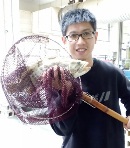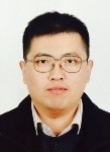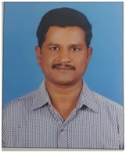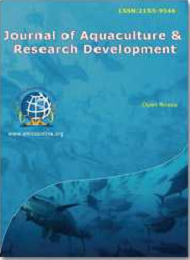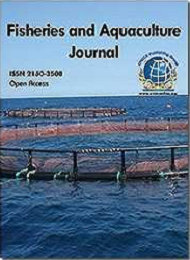Theme: To Create and Disseminate the Knowledge of Aquatic Resources
Aquaculture Summit 2017
ConferenceSeries Ltd invites all the participants from all over the world to attend ‘6th Global Summit on Aquaculture & Fisheries (CPD Accredited Event) during May 25-26, 2017 at Osaka, Japan which includes prompt keynote, Oral and Poster presentations and Exhibitions.
Aquaculture Conference refers to the growth and development of advanced and ancient Aquaculture & Fisheries global wide/continent wide/country wide review and development towards sustainable aquaculture round the world.
ConferenceSeries Ltd organizes a of 3000+ Global Events inclusive of 600+ Conferences, 1200+ Upcoming and Previous Symposiums and 1200 Workshops in USA, Europe & Asia with support from 1000 more scientific societies and publishes 700+ Open access journals which contains over 50000 eminent personalities, reputed scientists as editorial board members.
Why to attend???
• To promote effective gathering and dialogue among those involved in research and development activities in fisheries and aquatic resources nationally and internationally.
• To make a bridge between government & non-governmental organizations concerned in such activities.
• To create and disseminate the knowledge about maximum utilization, cultivation, conservation and development of aquatic resources.
• To make a platform for scientists and other personnel to discuss issues and policies related to development and conservation of aquatic resources.
• To serve the field of Fisheries and Aquaculture through the finding and discussion of the conference
• Empower young researchers and scientists to carry forward more studies and researchers to identify new avenues to develop a better world
• To promote new products, services and findings through exhibition and increase public awareness
Why in Japan???
Aquaculture has a very long history in Japan, beginning with nori seaweed culture in the 16th century. The artificial feeding of marine species was said to initiate in 1927 with yellowtail in Kagawa Prefecture. The aquaculture of yellowtail was suspended in World War II, but had come back in the decade following the War. And new aquaculture technologies were gradually applied to an increasing number of species. At present, it is said that about 30 species are cultivated in Japan; a part of those comprise most of the domestic production and so on. So The Aquaculture Summit 2017 take a step to educates consumers about the future prospective of aquaculture and fishing and risk management and we aims to bring together leading academic scientists, researchers and research scholars to exchange and share their experiences and research results.
Track 1: Aquaculture Technology and Engineering Applications:
Fish and other seafood represent an abundant and increasingly important source of healthy food for a growing world population. Observing and understanding the dynamics of the oceans as well as managing, harvesting and culturing its resources in sustainable ways require knowledge and smart technological solutions. Now a days research on fisheries and aquaculture systems focuses on how engineering cybernetics and its accompanying enabling technologies such as automatic control, smart sensors and monitoring systems, can be applied to better understand the processes of the sea and enhance the design and operation of marine biological production and harvesting systems. Important topics include systems biology, mathematical modelling of biological processes and production systems, aquaculture process control, underwater robotics, marine instrumentation and aquatic telemetry.
Track 2: Advances in Aquaculture Nutrition:
Freshwater fish species account for almost 50.00% of the world's aquaculture production, with tilapia, carp and catfish representing the primary culture species. These species are cultured in numerous countries as they have adaptable feeding habits, respond well to a wide variety of culture technologies and are well accepted by consumers. All three species can be easily reared on commercially produced floating feeds. Feeds not only represent one of the primary production costs and source of nutrients but they are also the primary source of pollutants that contribute to poor water quality and disease occurrences. Understanding the nutrient requirements, optimizing commercial feed formulations and managing feed inputs are all critical to the continued success of the industry. This chapter will review current concepts on nutrient requirements, pre- and probiotics, the options of using incomplete feeds as well as current trends in feed manufacturing.
Track 3: Diseases in Aquaculture:
Infectious diseases pose one of the most significant threats to successful aquaculture. The maintenance of large numbers of fish crowded together in a small area provides an environment conducive for the development and spread of infectious diseases. In this crowded, relatively unnatural environment, fish are stressed and more susceptible to disease. Moreover, the water environment, and limited water flow, facilitates the spread of pathogens within crowded populations.
Track 4: Aquaculture Economics:
The economics of aquaculture is reviewed on two levels: micro and macro. Micro-economics in aquaculture deals mainly with the management measures and elements affecting the efficiency of operation at the farm level, while macro-economic addresses the assessment of social benefits and costs of an aquaculture project. If aquaculture is socially beneficial but unattractive to private investors, public support on credit, marketing, extension, training, and research may be appropriate, especially during the early stages of development. The importance of economic analysis is emphasized since it provides a basis not only in the decision making of the individual farmer, but also in the formulation of aquaculture policies. Thus, greater attention should be focused on the improvement of economic data for analysis.
Track 5: Aquatic Resources & Environment Management:
Asia contributes over 90% of global aquaculture production and plays a key role in the development of appropriate culture systems and technologies. Aquaculture production accounts for almost half of world fish supply and increases by 10%. It is expected to surpass capture fisheries production in the next 10 years. Further development of aquaculture is also expected to help us move away from dependence on overexploited capture fisheries resources and to enhance and conserve aquatic habitats and biodiversity; but this expansion should not exceed the carrying capacity of water resources. Wild aquatic resources are essential sources of nutrition for rural populations. Any degradation of these resources from over-fishing, use of illegal fishing gears, introduction of exotic fish, misuse of chemicals, agro-industrial waste discharge, deforestation, breeding ground degradation and dam construction that can lead to blocking of migratory pathways will have dramatic impacts on the nutritional and health status of rural people.
Track 6: Biotechnology and Genetics in Aquaculture:
Biotechnology is permanently linked not only to aquaculture but also to commercial and recreational fisheries, because of its potential positive and negative impacts on these resources. A brief account of the history of genetic biotechnology use in aquaculture and fisheries. The growth of worldwide aquaculture has been sustained and rapid, and the explosion of research in genetic biotechnology has made significant impact on aquaculture and fisheries, although potential for much greater progress exists. Aquaculture and Fisheries Biotechnology: Genetic Approaches covers topics essential to the study of fish genetics, including qualitative and quantitative traits, crossbreeding, inbreeding, genetic drift, hybridization, selection programs, polyploidy, genomics and cloning. This fully updated second edition also addresses environmental risk, food safety and government regulation of transgenic aquatic organisms, commercial applications of fish biotechnology and future issues in fish genetics.
Track 7: Asian fisheries management:
The Asia-Pacific Fishery Commission, originally called the Indo-Pacific Fisheries Council is a Food and Agriculture Organization Article XIV Regional Fisheries Body which covers fisheries, aquaculture and related aquatic resource issues in the Asia-Pacific region. APFIC functions as a Regional Consultative Forum raising awareness amongst member countries, fisheries organizations and fisheries professionals in the Asia-Pacific region. In recent years, APFIC has covered a range of regional fisheries issues, including co-management of fisheries, low value/trash fish (may be referred to as bycatch where not targeted catch) in the region, illegal, unreported and unregulated fishing and fishing capacity management, certification in fisheries (e.g. ecolabel) and aquaculture, ecosystem approach to fisheries and aquaculture and improving resilience of fishery livelihoods. Most recently work has focussed on developing a training course for Ecosystem Approach to Fishery Management and guidelines for tropical trawl fisheries management.
Track 8: Fish Biology: Immunology, Physiology & Pathology:
Aquatic immunology compacts with disease problems represent the largest single cause of monetary losses in aquaculture. In 1988, catfish producers lost over 100 million fish worth nearly $11 million. Estimates for 1989 forecast even major losses. The trout industry reported 1988 losses of over 20 million fish worth over $2.5 million. No data are avail on losses sustained by producers of shellfish. Bacterial infections constitute the most significant source of disease problems in all the diverse types of production. Gram-negative bacteria cause epizootics in nearly all cultured species. Fungal diseases constitute the second most essential source of losses, above all in the culture of crustaceans and salmon. External protozoan parasites are accountable for the loss of huge numbers of fry and fingerling fin fishes and are a cause of epizootics from all young shellfish. The number of therapeutants approved by the Food and Drug Administration is limited. Invention to support the registration of promising therapeutic agents is urgently needed
Track 9: Oceanography:
Fisheries oceanography can be broadly defined as study of the interaction between marine fish and their environments across multiple life-history stages. Traditional fisheries management approaches estimate population abundance levels as a function of the number of spawning adults without environmental or ecological input, but the field of fisheries oceanography has provided a framework to predict recruitment and define harvest strategies within an ecosystem context. By seeking to elucidate mechanistic relationships between fish species and their surrounding oceanic habitats, the field of fisheries oceanography aims to provide a solid understanding of fish behaviour, population dynamics, and life history with an ecosystem perspective.
Track 10: Freshwater and Marine Fisheries/Aquaculture:
Freshwater aquaculture produces species that are native to rivers, lakes, and streams. U.S. freshwater aquaculture is dominated by catfish but also produces trout, tilapia, and bass. Freshwater aquaculture takes place primarily in ponds and in on-land, manmade systems such as recirculating aquaculture systems.
Track 11: Culture of Fishes, Crustaceans, Molluscs and Aquatic Plants:
When a last growing improved variety of fish having good taste are cultured in small and controlled water body under controlled conditions and management is called Fish Culture. Like in Agriculture, in fish culture also, the water body is prepared, fertilised, stocked with cultivable fish species, fed with supplementary food and grown to bigger size and ultimately harvested when they attain marketable size. Fish Culture is being one of the most productive culture practice, therefore, fish culture is very common and widely practised in most of the countries of the world. This fish culture practice do not only produces nutritious food - fish for the improving nutritional status but also helps in generating income and provide job opportunities to the mass of the people. The fish culture is comparatively easier, thus a person affords to look after larger production areas in compare to other agricultural activities. Moreover, by this practice system, fish is produced at low and lower cost and the increased production give economic benefit to the grower. The construction of a water body in the form of small or big pond do not only facilitates to carry fish culture but it also helps in conserving water to use as per the need arises e.g. to fight against the fire or to save the major agricultural crop by irrigation in drought condition.
Track 12: Fisheries Management and Policy:
“The integrated process of information gathering, analysis, planning, consultation, decision-making, allocation of resources and formulation and implementation, with enforcement as necessary, of regulations or rules which govern fisheries activities in order to ensure the continued productivity of the resources and the accomplishment of other fisheries objectives. The fisheries management authority and the interested parties. The fishers and fishing companies would usually be the major participants amongst the interested parties. The fisheries management authority is that entity which has been given the mandate by the State (or States in the case of an international authority) to perform specific management functions. In many countries that authority would be a Department of Fisheries or, within a broader Department, a Division of Fisheries. However, a fisheries management authority does not have to fall directly within central government, and could be, for example, provincial, local, parastatal or private. Any one of these arrangements can function effectively, given an adequate legal framework in which to operate and the resources necessary to fulfil their function.
Market Analysis:
Summary: Aquaculture Summit 2017 welcomes attendees, presenters, and exhibitors from all over the world to Osaka, Japan. We are delighted to invite you all to attend and register for the “6th Global Summit on Aquaculture & Fisheries (Aquaculture Summit 2017)” which is going to be held during May 25-26, 2017 at Osaka, Japan. The organizing committee is gearing up for an exciting and informative conference program including plenary lectures, symposia, workshops on a variety of topics, poster presentations and various programs for participants from all over the world. We invite you to join us at the Aquaculture Summit 2017, where you will be sure to have a meaningful experience with researchers and industrial people across the world. All the members of Aquaculture Summit 2017 organizing committee look forward to meet you at Osaka, Japan
For more details please visit: http://aquaculture.global-summit.com/
Global Market Segmentation:
Global aquaculture demand was 69,230 kilo tons in 2013 and is expected to reach 80,400 kilo tons by 2020, growing at a CAGR of 2.0% from 2014 to 2020. China was largest market for aquaculture, accounting for about 53% of global market share, valued at USD 77,934.8 million in 2013. The market is expected to show rapid growth due to favourable climatic conditions for aqua farming, availability of resources and labour. Asia Pacific (excluding China) was the second largest market for aquaculture with market demand of 17.965.2 kilo tons in 2013, and is estimated to grow with a CAGR of 2.1% from 2014 to 2020 due to ideal climatic conditions and technological innovation in this region. In 2013, fresh water was the largest culture environment for aquaculture with market share of over 60% and is expected to witness swift growth, at an estimated CAGR of 2.2% from 2014 to 2020.
American Aquaculture Market segments:
The United States dominated regional production with 438 000 mt in 1997, valued at US$771 million, while Canadian production of 83 000 mt earned US$322 million. The higher relative earnings for Canadian production reflect the dominance of Atlantic salmon, while channel catfish is the principal species cultured in the United States. In North America, the value of farmed salmon increased from US$82 million in 1988 to US$371 million in 1997, an APR of 18.3. Channel catfish production in the United States increased from 164 000 mt in 1988 to 238 000 mt in 1997, a 45 percent gain at an APR of 4.2. Production of other finfish species includes trout, sturgeon, striped bass, golden shiners and tilapia. Shellfish cultured in the region include American and Pacific cupped oysters, blue mussels, clams, crayfish and shrimp.

Table1: Reported aquaculture production in United States of America (from 1990)
Europe Aquaculture Market segments: Aquaculture in the European Union. European aquaculture producers mainly produce fresh-water fish, salt-water fish and molluscs. They also produce small quantities of crustaceans and seaweed. Producing 1 315 000 tonnes in 2000, European aquaculture accounts for barely 3% of world production, although it tops the list for certain species. Annual production value amounts to EUR 2 500 million. Fish farming can be found in rural areas and peripheral regions dependent on fisheries. In some regions, like Galicia and Brittany, it plays a crucial socio-economic role.The sector suffers from price instability and should be regulated by appropriate legislation at European level. This would help provide stability in areas dependent on fishing and provide them with economic viability and self-sufficiency.The field of aquaculture faces many challenges.In particular, the priority must be to keep the sector economically viable, guarantee food safety and animal welfare, solve environmental problems and stimulate research.

Table 2: Evolution of European Aquaculture Production (2005-2016)
Asia pacific aquaculture market segments:
Asia is the home of aquaculture, a practice which dates back to thousands of years. In the course of its development, the nature of aquaculture has become more intricate, intertwining with other food production sectors under the influence of political, social, economic, technological and cultural factors. With advancement of technology, the involvement of more aquatic species and farming practices has become possible, and more choices can be offered to the consumers. Population growth, economic growth and the development of disposable income and higher purchasing power, and social factors such as traditional fish consumption patterns, will shape future demand for fish and fishery products (Westlund, 1995). Issues of sustainability can also change our perception of desirable forms of aquaculture development and management (Roberts and Muir 1995). Under the evolving global trade negotiations and agreements, new ways of aquaculture may have to be adopted, so that the environmental and resource costs of production, as factors of sustainability, are kept within agreed limits. It could become increasingly difficult to pursue the traditional methods of aquaculture where a particular species is produced for a market, based exclusively on prices. Under the World Trade Organization, suppliers would have to satisfy a set of requirements to ensure sustainable development of aquaculture.

Table 3: Composition (in percentage) of aquaculture organisms cultivated by countries in Asia
Middle East aquaculture market segments: With seven seas surrounding the region, including the Mediterranean, the Persian Gulf, the Gulf of Aden, the Red Sea, the Black Sea, the Caspian Sea and the Arabian Sea, the Middle East is not short of sources for fresh seafood. However, total production in the region amounts to only 2.17% of the total worldwide production. Middle eastern capture fisheries are characterized by a large number of small-scale fishers, with estimates that the small-scale sector provides about 80 to 90% of the total landings.

Table 4: Middle East Aquaculture & Fisheries Production
Why Osaka, Japan..?
Commercial aquaculture production in Japan has developed dramatically since the end of the 2nd World War and today occupies an important place in the fisheries sector. Total aquaculture production in 2003 was estimated at 1 301 437 tonnes, worth US$ 4 199 million (FAO 2005), which corresponds to 22 percent of total national fisheries production and 31 percent of the total value produced in Japan. Marine aquaculture accounts for 96 percent of total aquaculture production and 90 percent of the total value produced. Together with our active role in the analysis of standards for sustainable farming practices, aquaculture market, aquaculture research, aquaculture societies, Japan is the suitable place to all Asian countries to reach Aquaculture Summit 2017, Osaka, Japan is also famous as world’s best tourism spot, So we are committed to place our Aquaculture Summit 2017 in Osaka, Japan.

Table 5: Aquaculture production and capture fisheries at Japan
Global Fisheries and Aquaculture Universities:
- Agricultural University of Norway, Norway
- Auburn University, United States.
- Brunswick Community College, United States
- Chulalongkorn University, Thailand
- Deakin University, Victoria
- Delaware State University, United States
- linders University, Australia
- Heriot-Watt University, United Kingdom
- Hofstra University, United States
- Humboldt State University, United States
- James Cook University, Australia
- Kentucky State University, United States
- Malaspina University-College, Canada
- Mansfield University, United States
- Memorial University, Canada
- Northern Territory University, Australia
- Rhodes University, South Africa
- Southern Illinois University, United States
- State University of Ghent, Belgium
- Shanghai Ocean University, China
Universities in Japan for Aquaculture & Fisheries
- Kindai University, Japan
- Kinki University
- Nagasaki University
- Hokkaido University
- Kagoshima University
- Sultan Qaboos University
Global Fisheries and Aquaculture Research Institutes:
- Andalusia Centre for Marine Science and Technology, Spain
- Bureau of Fisheries and Aquatic Resources, Philippine
- Central Institute of Brackish Water Aquaculture, India
- Central Institute of Fisheries Technology, India
- Central Marine Fisheries Research Institute, India
- Deep Bay Marine Field Station, Canada
- Fisheries Research and Development Corporation, Australia
- Fisheries Research Services Marine Laboratory, UK
- Global Ocean Ecosystem Dynamics, Chile
- Korea Institute of Maritime and Fisheries Technology, South Korea
- Marine Institute Ireland, Ireland
- National Fisheries Research & Development Institute, South Korea
Aquaculture & Fisheries Research Institutes in Japan:
- Tohoku National Fisheries Research Institute
- National Research Institute of Aquaculture
- Global Environment Research in Japan
Global Aquaculture Societies:
- Asian Fisheries Society
- China Society of Fisheries, China
- Korean Society of Fisheries and Sciences (KOSFAS), Korea
- Aquaculture Association of Canada, Canada
- Aquaculture Association of S. Africa, South Afreica
- European Aquaculture Society, Europe
- Brazilian Aquaculture Society (AQUABIO), Brazil
- Indonesian Aquaculture Society, Indonesia
- Society of Aquaculture Professionals, India
- Malaysian Fisheries Society, Malaysia
- Egyptian Aquaculture Society, Egypt
- Spanish Aquaculture Association (SEA), Spain
Aquaculture Societies in Japan:
- Japan Fishers Association
- Aquaculture Fish Farming Associations Japan
- Japanese Society for Aquaculture Research
Funding Agencies:
- Food and Agriculture Organization of the United Nations,
- World Aquaculture Society
- Taiwan Fish Society, Taiwan
- Malaysian Fisheries Society , Malaysia
- National Oceanic and Atmospheric Administration
Conclusion: Aquaculture is one of the fastest growing food production sectors in the world. More importantly, it is a fundamental element in the global solution to provide a sustainable seafood source. The addition of aquaculture to help satisfy fish demand helps natural stock population and growth, lessening the strain on stressed fisheries
References:
http://ec.europa.eu/fisheries/cfp/aquaculture/facts/index_en.htm
http://www.fao.org/fishery/countrysector/naso_usa/en
http://eur-lex.europa.eu/legal-content/EN/TXT/?qid=1414591129273&uri=URISERV:l66015
http://www.fao.org/docrep/013/i1820e/i1820e.pdf
http://www.fao.org/docrep/004/ab980e/ab980e03.htm
Conference Highlights
- Aquaculture Technology and Engineering Applications
- Advances in Aquaculture Nutrition
- Diseases in Aquaculture
- Aquaculture Economics
- Aquatic Resources & Environment Management
- Biotechnology and Genetics in Aquaculture
- Asian fisheries management
- Fish Biology: Immunology, Physiology & Pathology
- Oceanography
- Freshwater and Marine Fisheries/Aquaculture
- Aquaculture in Asia-Pacific Countries
- Fisheries Management and Policy
- Information Technology in Aquaculture Marketing and Business
- Aquatic Invasive Species
To share your views and research, please click here to register for the Conference.
To Collaborate Scientific Professionals around the World
| Conference Date | May 25-26, 2017 | ||
| Sponsors & Exhibitors |
|
||
| Speaker Opportunity Closed | Day 1 | Day 2 | |
| Poster Opportunity Closed | Click Here to View | ||
Useful Links
Special Issues
All accepted abstracts will be published in respective Our International Journals.
- Journal of Aquaculture Research & Development
- Fisheries and Aquaculture Journal
- Journal of Fisheries & Livestock Production
Abstracts will be provided with Digital Object Identifier by


















